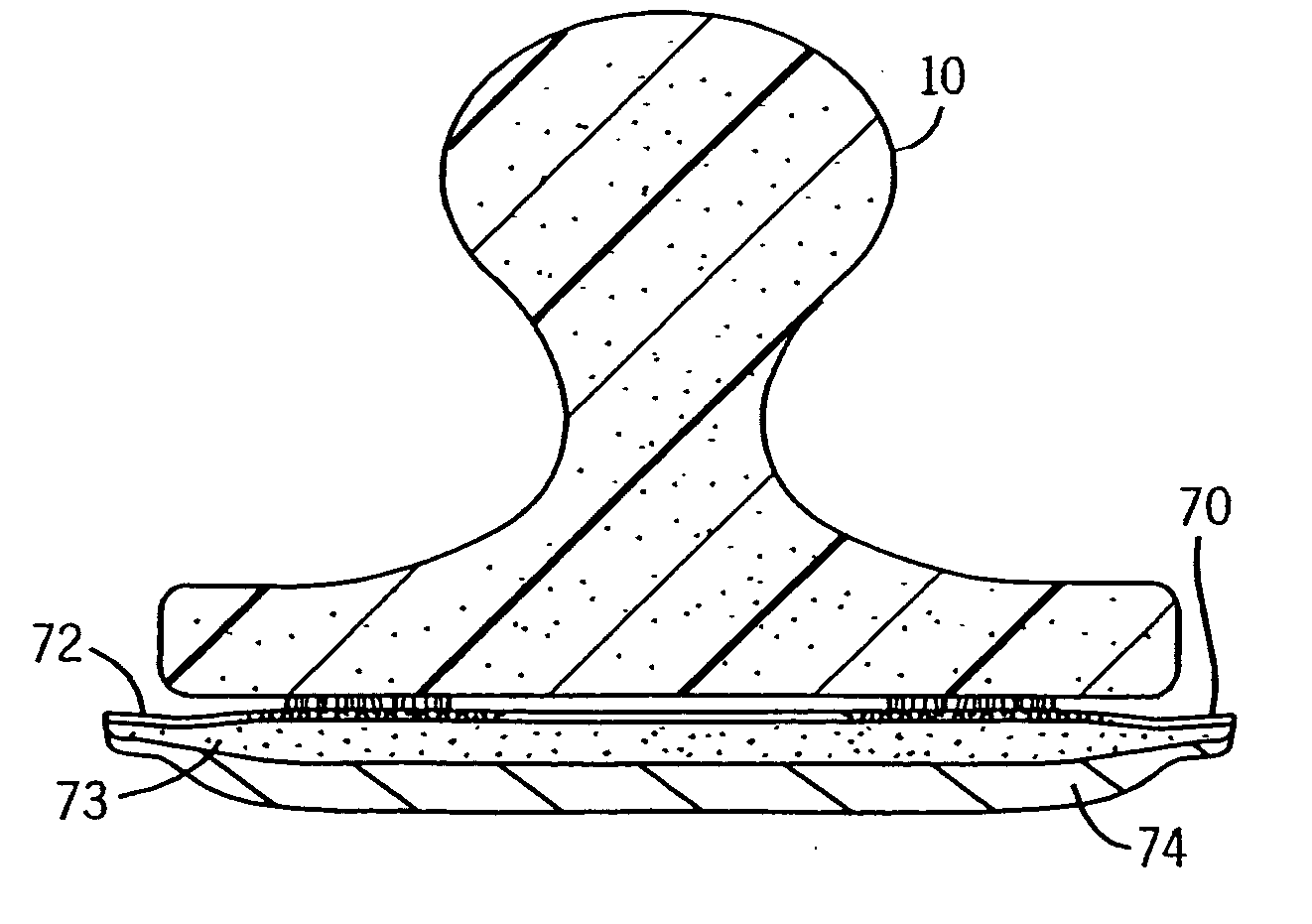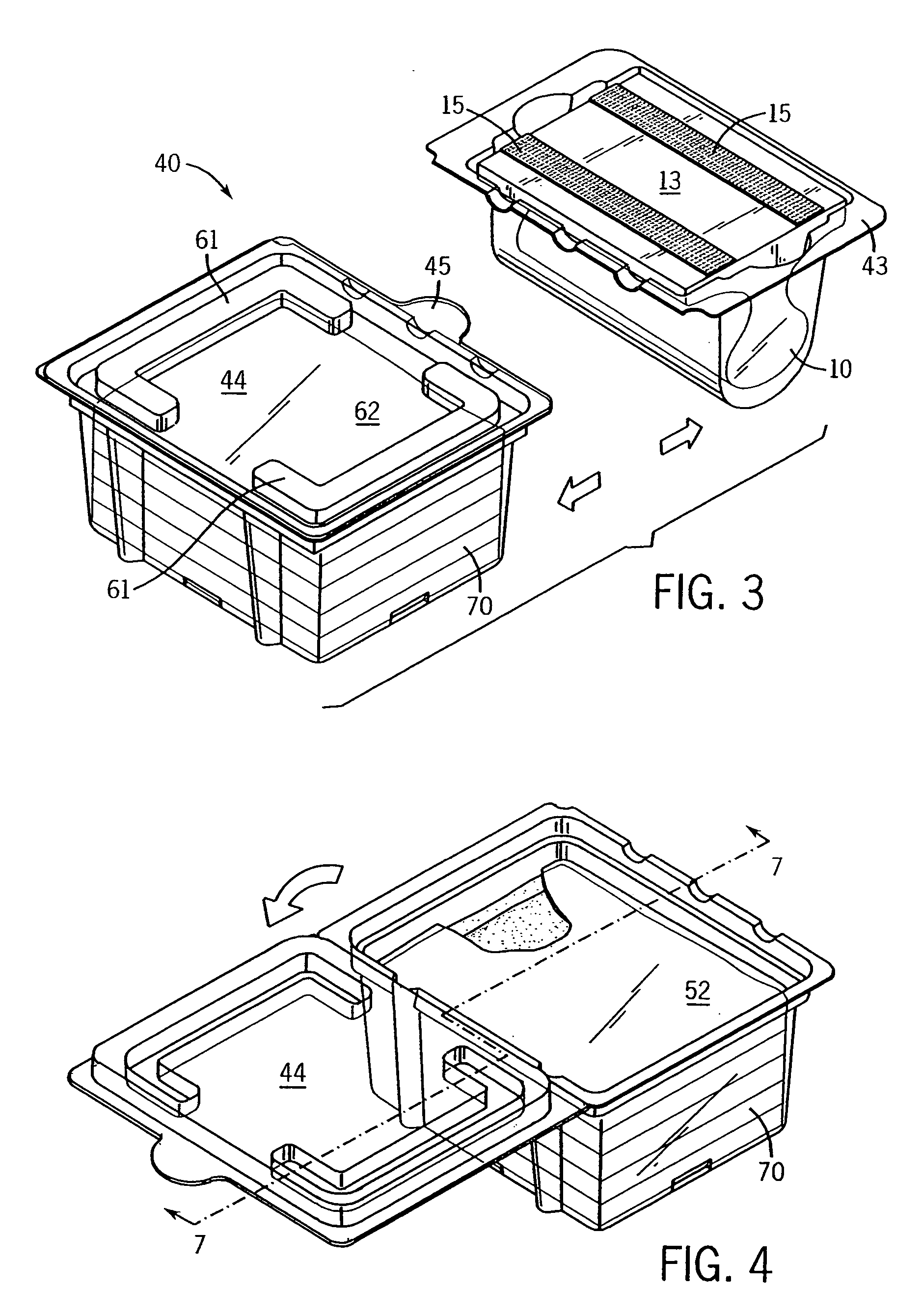Cleaning system
a cleaning system and surface treatment technology, applied in the direction of carpet cleaners, cleaning equipment, cleaning machines, etc., can solve the problems of brush drippage, difficult to use these devices to clean corners around bathtubs, and narrow grooves between wall tiles, etc., to achieve convenient cleaning, convenient affixed to the handle, and convenient cleaning
- Summary
- Abstract
- Description
- Claims
- Application Information
AI Technical Summary
Benefits of technology
Problems solved by technology
Method used
Image
Examples
Embodiment Construction
[0047] A. Overview
[0048] The preferred cleaning system is depicted in the enclosed drawings. As shown in FIGS. 1 and 2, the system has a handle 10, a container 40, and a plurality of multi-layer cleaning pads 70. These features will be described below.
[0049] B. The Handle
[0050] The handle 10 is almost entirely an extruded body, such as an extruded foam body, most preferably an extruded polyethylene foam body such as a Nomaco polyethylene foam body. The foam can be extruded in a continuous strip having the FIG. 12 profile, then cut into lengths of about 8-16 centimeters, (preferably about 11.5 centimeters). A most preferred foam has a density of between 15 and 35 kilograms / meter3 (preferably a density of about 24 kilograms / meter3).
[0051] Because it is extruded, the handle will have a cross section that is uniform throughout its length (except perhaps at the very ends if the cutting is not straight). Because it can be truncated by simple cutting, it is inexpensive to produce. Surp...
PUM
| Property | Measurement | Unit |
|---|---|---|
| Temperature | aaaaa | aaaaa |
| Fraction | aaaaa | aaaaa |
| Fraction | aaaaa | aaaaa |
Abstract
Description
Claims
Application Information
 Login to View More
Login to View More - R&D
- Intellectual Property
- Life Sciences
- Materials
- Tech Scout
- Unparalleled Data Quality
- Higher Quality Content
- 60% Fewer Hallucinations
Browse by: Latest US Patents, China's latest patents, Technical Efficacy Thesaurus, Application Domain, Technology Topic, Popular Technical Reports.
© 2025 PatSnap. All rights reserved.Legal|Privacy policy|Modern Slavery Act Transparency Statement|Sitemap|About US| Contact US: help@patsnap.com



